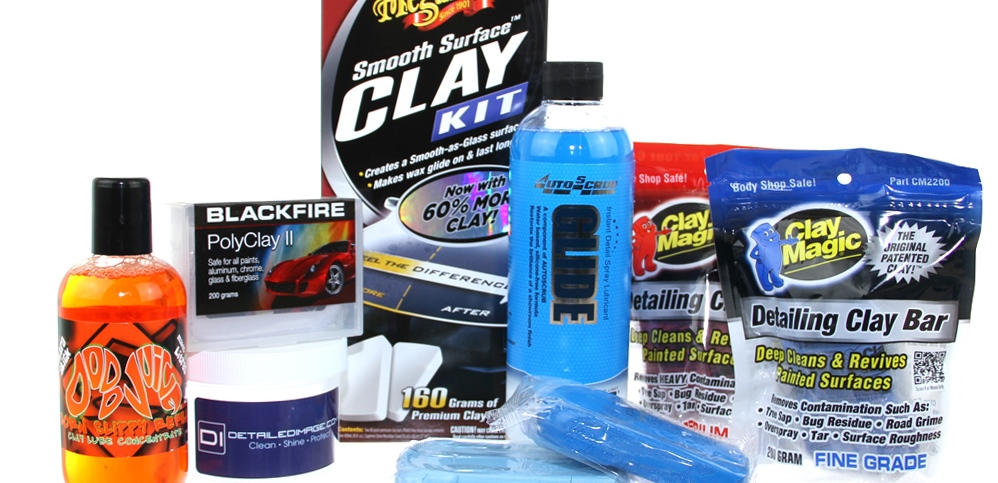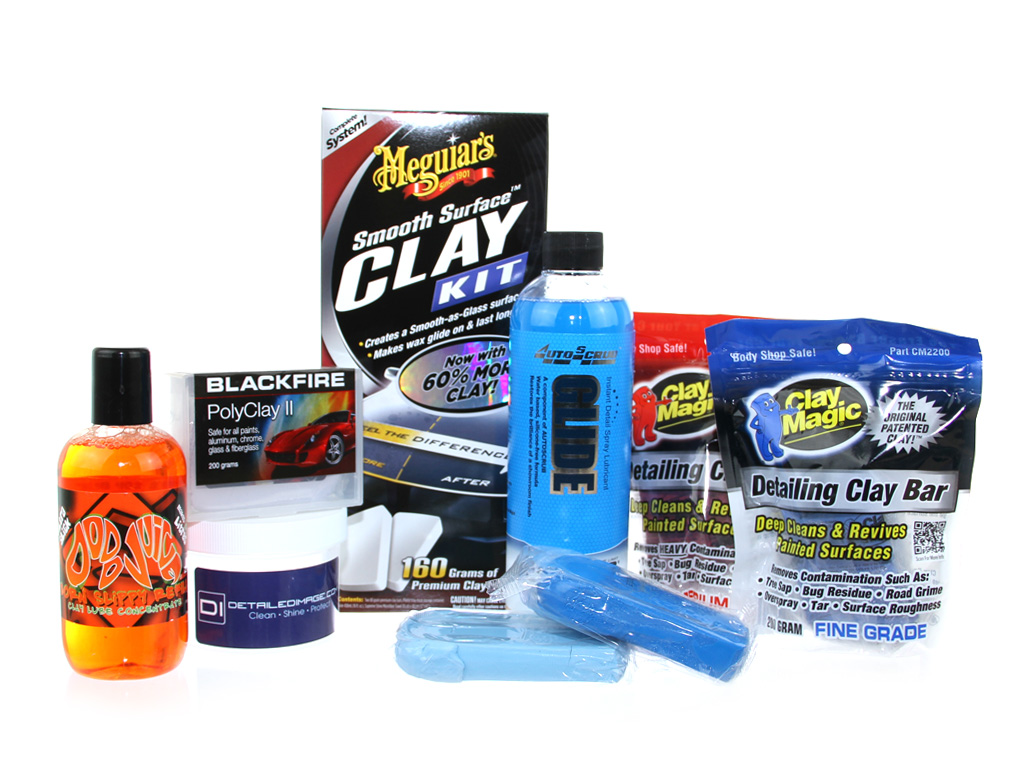This is a very good question and one that comes up very often by those wanting to decontaminate their vehicle properly. There are MANY clay bars on the market from many different manufacturers, so my goal here won’t be to go into them specifically, rather as a general guide. Before reading further, I would highly recommend reading Todd Cooperider’s article on How To Properly Use a Clay Bar. Todd discusses a few things about clay bars and how to use them. Basically, it’s a tool used to abrade away contamination from a painted surface in order to make for easier and more efficient polishing, longer durability with protection products and, well quite simply, leave a smooth surface. 🙂
Most manufacturers provide different grade clay bars for different applications. The finer clay bars are usually less coarse and easier to knead, but they also work very slowly, rather abrade away contamination slower than the more abrasive bars. Normally there will be words such as fine, medium and heavy for different types of clay bars, but from my experience they don’t really translate across different manufacturer lines, so my advice is to always do a bit of research on the clay bar, or better yet try it yourself to determine which is which. Finer clay bars tend to do the job most of the time on lightly contaminated vehicles and leave a pretty good surface behind. On some harder paints and when used with a good amount of quality lube, very fine clay bars may not noticeably mar then paint at all. On more sensitive paints, even the finest of clay bars may easily leave some marring on the surface, which will require some polishing to remove. On the other hand, more abrasive clay bars tend to work much quicker in removing contamination, but at the same time will pretty much 100% of the time lightly mar the surface. On sensitive paints, especially if used improperly the aggressive clay bars can leave some fairly heavy defects that might even need two stages of polishing to correct.
Thus, clay bar selection will depend mainly on the level and type of contamination, but also on the paint being decontaminated. When dealing with something like fresh tar or rail dust, a fine clay bar should be all that’s needed and when used properly will either eliminate or greatly reduce the need for polishing after using that clay bar. On the other hand, when the contamination is something that has built up over the years, tree sap or really stubborn tar, a more abrasive clay bar will greatly reduce the working time and many times will even be necessary. However, as mentioned before, when using an aggressive clay bar one should almost always be ready to polish afterward in order to refine the paint.
I have found the bar in the Meguiar’s Smooth Surface Clay Kit G10 to be one of the finest around and I try to use it as much as possible when dealing with sensitive paint or light contamination. The Blackfire Poly Clay Bar is another clay bar I have heard is very good and fine in terms of abrasiveness, but I have not tried it enough to confirm. My personal favorite clay bar is the Clay Magic Fine Grade Clay Bar. While it’s called “fine”, I would probably put this bar in a slightly more aggressive category than some of the truly fine bars on the market. Reason being, it can surely decontaminate paint quicker than the finer bars when used the same way, but at the same time will leave surface marring more often as well. I do always try to use it as finely as possible to lower the amount of marring it leaves, but since I always polish after using a clay bar, I don’t worry about it too much as it speeds up the work quite a bit. When necessary, I reach for my Clay Magic Medium Grade Clay Bar. The red medium bar works much quicker than the blue bar and as expected, easily leaves noticeably more marring on the surface. Thus, I use it only when necessary, which fortunately enough for me isn’t that often.
There are many misconceptions about clay bar selection, such as finer clay bars will never leave marring and more aggressive clay bars will work faster. While that may be true for the most part, as mentioned above, there is more to it than that when selecting the right clay bar for your project. Just because a fine clay bar might leave a perfect surface after decontamination doesn’t mean you should spend 4-5 hours removing over-spray or heavy buildup on the paint. Instead, you can use a more aggressive clay bar that will remove the contamination in 1-2 hours, then you can spend the other 3-4 hours polishing the paint and getting a much better result. Similarly, you don’t want to use the aggressive clay bar just because it works faster. Yes maybe you’ll shave off an hour when using a red Clay Magic bar vs a blue one, but you also may end up having to polish that same car for a few hours in order to fix the surface marring left by the red bar. In short, I would recommend following the general rule in detailing when selecting products … start with the finer solution and work your way up as deemed necessary.
Lastly, I wanted to note that my lube of choice is NanoSkin Glide but I also like the Dodo Juice Born Slippy Clay Lube quite a bit. For more information on those lubes, please check out my product review of NanoSkin Glide. Finally, regardless of what clay bar, or bars, you decide to purchase and keep in your detail arsenal, I would highly recommend a DI Accessories Clay Bar Storage Container to store the bar in and preserve it for a long time.
Hope that helps!

